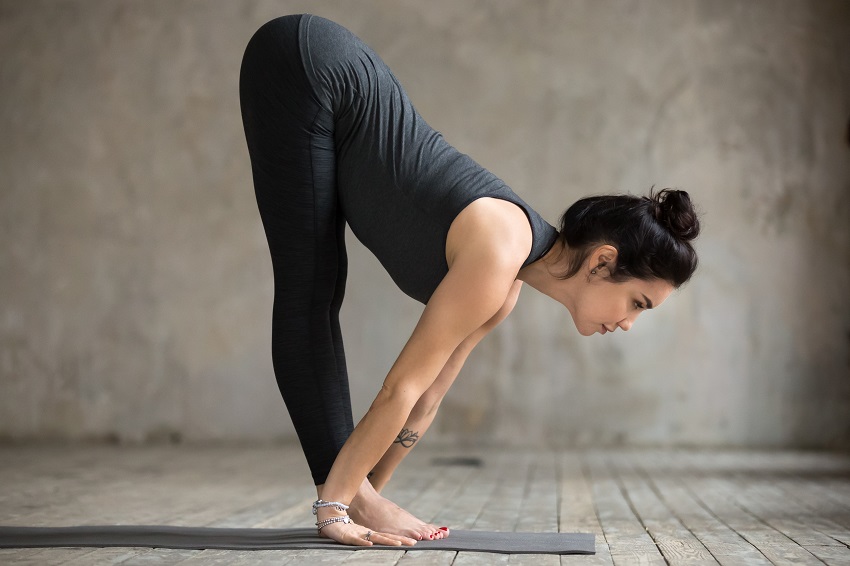Standing Forward Fold:
Name: Standing Forward Fold
Sanskrit: Uttanasana
Pronunciation: OOT-tan-AHS-anna
Pose Level: Beginner

Step-by-Step:
- Start by positioning yourself in Tadasana (Mountain Pose).
- Inhale deeply and raise your hands in Urdvha Hastasana. In the subsequent exhalation hinge forward. As you lean forward, try to push your torso forward and create space between your pelvis and breastbone. If you can’t do this with your legs straight, try bending your knees. This will allow you to both reach lower and not hyperextend the hamstrings.
- At this point, keeping the base stable, push your feet to the ground and try to send your butt slightly higher trying to straighten your knees. This must be done gently without forcing excessively.
- On the next inhalation, push your hands onto the mat, try to reach forward and lift your torso, tensing the spine. If you can, try to look forward, but don’t strain your neck too much.
- On each exhalation you may attempt to deepen your stretch.
- Once finished, come up with your torso, keeping your back straight. To ensure that there is less weight on the spine as you ascend, place your hands on your hips.
Benefits Of Standing Forward Fold:
- The forward bend helps massage the belly. Thus, digestion may be improved.
- It stimulates organs such as the liver, spleen and kidneys.
- Lengthens the spine, stretches the hamstrings, calves and hips.
- It reduces stress and calms the mind.
- Helps relieve lower back pain.
Pose Modifications:
Oftentimes, newcomers to forward fold have tight hamstrings or lower backs. This makes it difficult to get a good reach with straightened legs. Try bending slightly at the knees until building up flexibility in these areas. Moreover, getting that touch of the mat is important.
Consequently, this will allow you to deepen the stretch of the hamstrings as time moves on. Forward fold is most often done with feet together. However, if your balance is not all there yet, spread them slightly apart.
In addition, you can place a yoga block on the ground. Thus, allowing you to more easily reach the ground.
Contraindications:
If you have back problems or other types of ailments, talk to a doctor before practicing this or any other yoga posture.
Avoid this and other poses that may result in excess pressure to the head for certain conditions. For example, glaucoma.
Poses Commonly Transitioned too:
Mountain Pose (Tadasana), Plank (Phalakasana)
Poses Commonly Transitioned From:
Halfway lift (Ardha Uttanasana), Upwards Salute ( Urdvha Hastasana)




